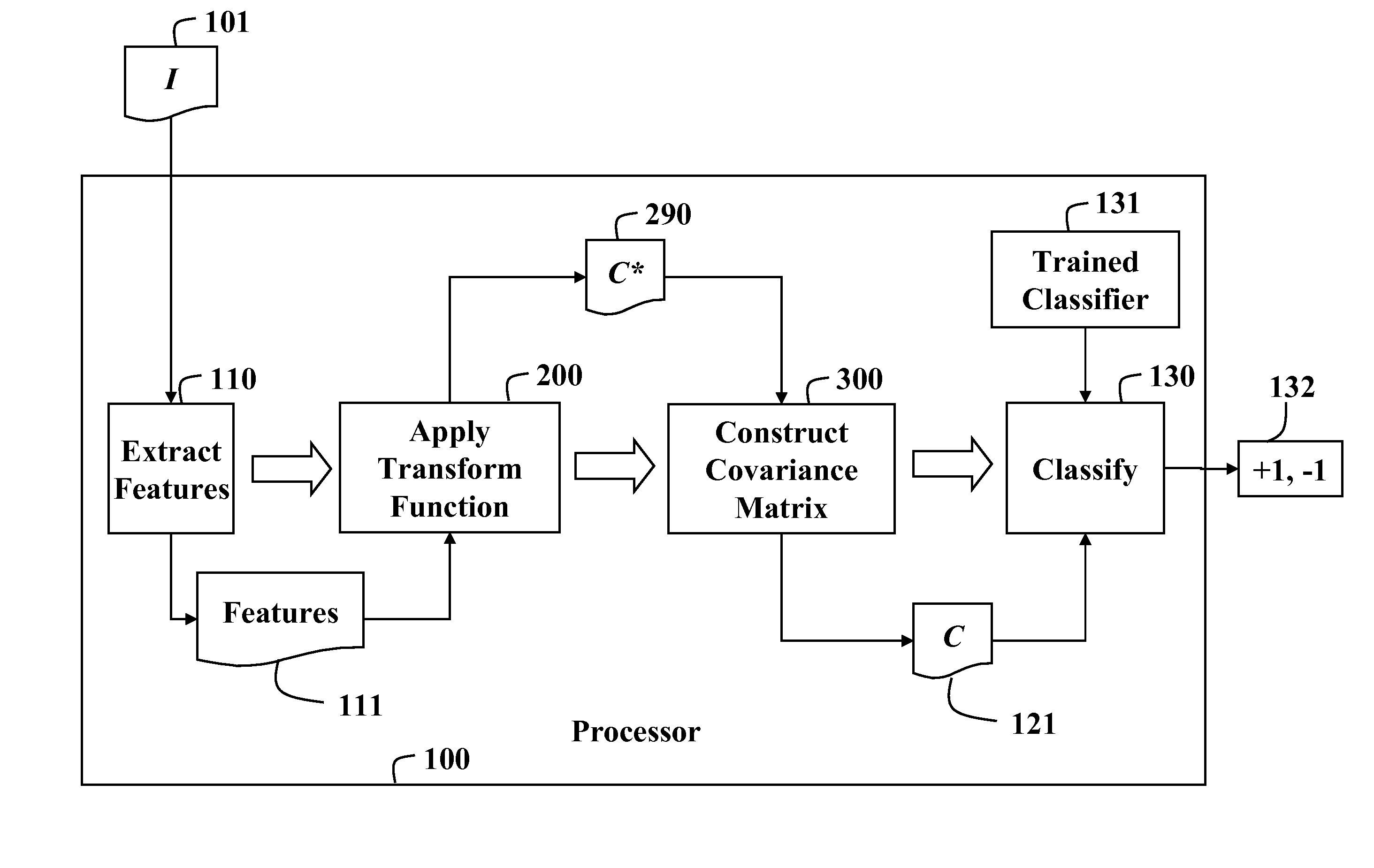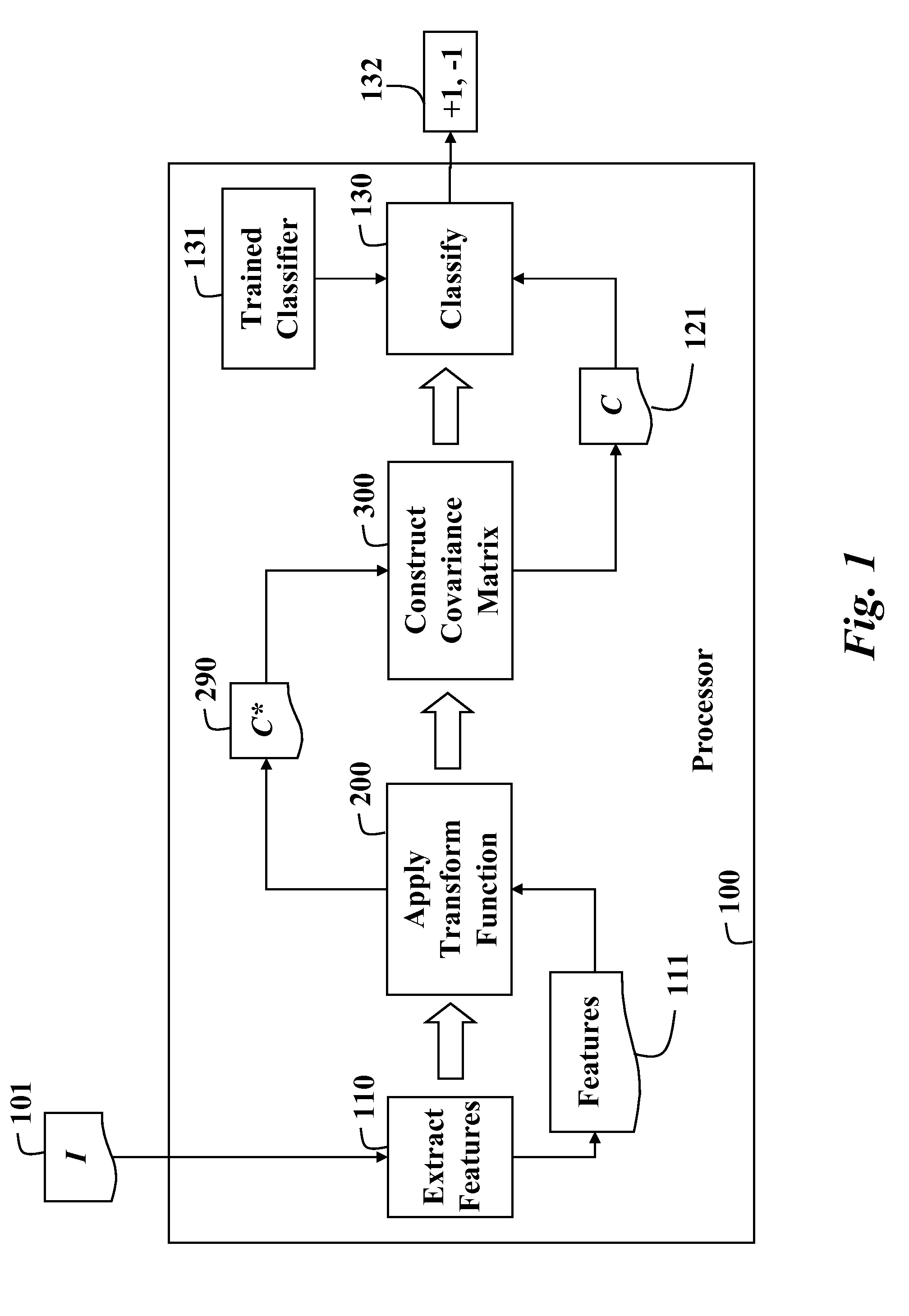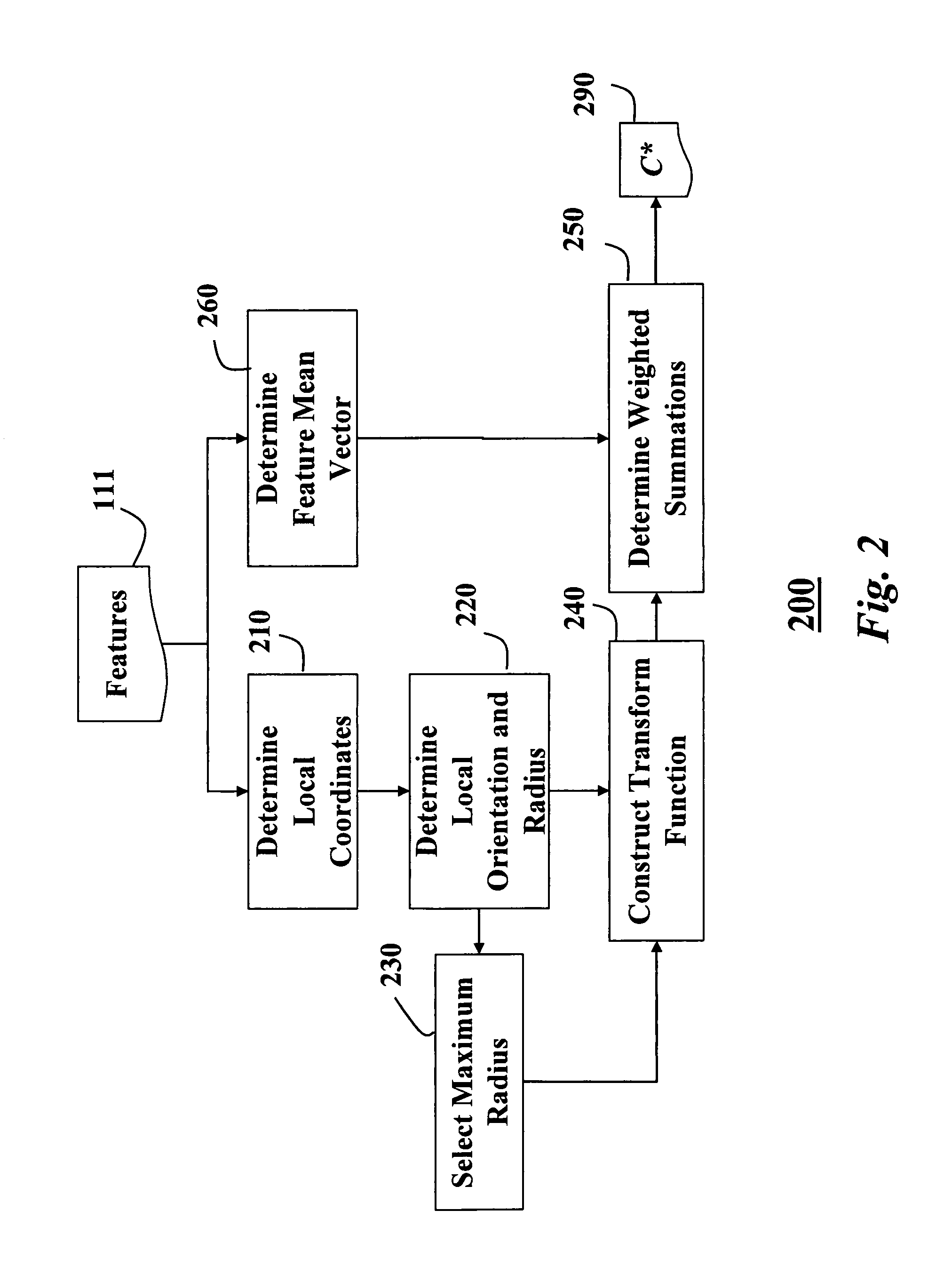Detecting objects in images with covariance matrices
- Summary
- Abstract
- Description
- Claims
- Application Information
AI Technical Summary
Benefits of technology
Problems solved by technology
Method used
Image
Examples
Embodiment Construction
[0031]FIG. 1 shows a method and processor 100 for detecting objects in an image according to an embodiment of our invention. During a detecting phase, we extract 110 features 111 from different windows of an image I 101. We apply a frequency transform 200 to the features 111 to obtain transformed features C* 290.
[0032]From the transformed features, we construct 300 covariance matrices 121. The matrices can be invariant or sensitive to rotation.
[0033]Then, using a trained neural network 131, we classify 130 the image, using the covariance matrices 121, as including a particular object or not, e.g., [+1, −1]132.
[0034]The object detection problem is a binary classification problem. We use the trained neural network 131 to determine whether a given window in the image corresponds to the object or not. Each window has an associated covariance matrix.
[0035]Training
[0036]The way that features are extracted and used to construct covariance matrices during a training phase is identical to th...
PUM
 Login to View More
Login to View More Abstract
Description
Claims
Application Information
 Login to View More
Login to View More - R&D
- Intellectual Property
- Life Sciences
- Materials
- Tech Scout
- Unparalleled Data Quality
- Higher Quality Content
- 60% Fewer Hallucinations
Browse by: Latest US Patents, China's latest patents, Technical Efficacy Thesaurus, Application Domain, Technology Topic, Popular Technical Reports.
© 2025 PatSnap. All rights reserved.Legal|Privacy policy|Modern Slavery Act Transparency Statement|Sitemap|About US| Contact US: help@patsnap.com



